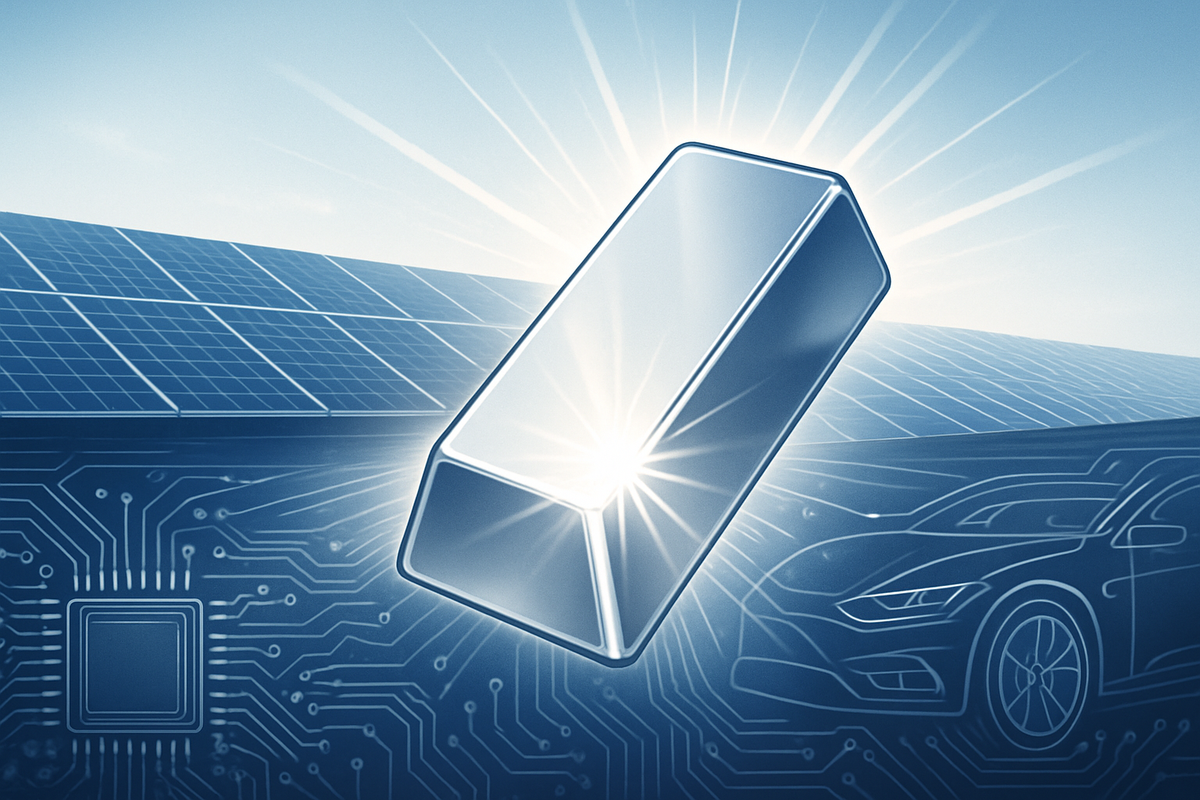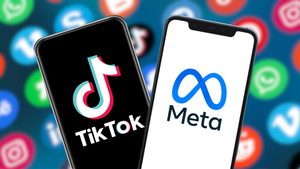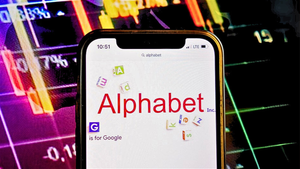
October 3, 2025 - Silver, often overshadowed by its glittering counterpart gold, is currently experiencing an unprecedented surge, with prices soaring by 40-60% year-to-date in 2025, now trading robustly around $46-$47 per ounce. This remarkable rally is not merely speculative; it is fundamentally driven by an insatiable and inelastic industrial demand, particularly from the rapidly expanding solar and advanced technology sectors. The market is witnessing a profound structural shift, with industrial applications now consuming roughly half of the total silver supply, a significant departure from historical consumption patterns.
This dramatic ascent in silver prices carries immediate and far-reaching implications across global markets. For investors, it signals a potential re-evaluation of silver's intrinsic value, moving beyond its traditional role as a precious metal and safe-haven asset to acknowledge its critical function as an industrial commodity. For industries reliant on silver, such as solar panel manufacturers and electronics producers, it translates into rising input costs, potentially influencing production strategies and pricing structures. The sustained upward trajectory, fueled by a persistent supply deficit, suggests that silver's moment in the sun may be far from over, potentially challenging its all-time highs and reshaping investment portfolios.
The Industrial Engine: Solar and Tech Drive Silver's Ascent
The current silver price surge is a story of fundamental supply and demand, with industrial consumption taking center stage. As of early October 2025, silver's performance has been nothing short of extraordinary, having commenced the year at approximately $28.92 per ounce. The third quarter of 2025 alone saw silver gain 27.5%, marking its best quarterly performance in five years, with a further 16.1% increase in September. This sustained momentum is underpinned by silver's irreplaceable properties – its unmatched electrical and thermal conductivity – making it indispensable in high-performance applications where efficiency is paramount.
The solar photovoltaic (PV) industry is the most significant growth driver. Silver usage in solar panel production has exploded, projected to reach 232 million ounces in 2024, up from 60 million ounces in 2015. This exponential growth is a direct consequence of the global push towards renewable energy, with the International Energy Agency forecasting over 4,000 GW of new solar capacity by 2030. Each solar panel contains approximately 15-20 grams of silver paste, crucial for efficient electron capture and transmission. Despite ongoing "thrifting" efforts to reduce silver content per panel, the sheer scale of global solar expansion ensures that overall silver demand from this sector continues its upward trajectory.
Beyond solar, the broader technology sector is also a voracious consumer of silver. The electrical and electronics industries (excluding solar) saw silver consumption rise from 213 million ounces in 2015 to 254 million ounces in 2024. Silver's superior conductivity is vital in semiconductor chips, printed circuit boards, CPUs, mobile phones, and a vast array of Internet of Things (IoT) devices. Demand for silver in 5G technology, including IoT and semiconductors, is projected to increase by a staggering 200% over the next decade, reaching 23 million ounces by 2030. Furthermore, the burgeoning electric vehicle (EV) market utilizes substantially more silver than traditional internal combustion engine vehicles, primarily in battery management systems, power electronics, and charging infrastructure, adding another layer to the robust industrial demand.
This robust demand is colliding with a structural supply deficit, now in its fifth consecutive year. Mine production has consistently failed to keep pace with accelerating industrial consumption, creating an imbalance that cannot be quickly remedied through new mining projects. This deficit is projected to persist and even widen through 2025-2030, putting sustained upward pressure on prices. The relatively small size of the silver market, with an annual turnover of approximately $30 billion, means that even marginal shifts in demand can lead to significant price volatility. Analysts from institutions like Trading Economics project silver to reach $48.25 by the end of Q4 2025 and $50.33 within the next 12 months, with some specialists eyeing even higher targets if supply constraints endure.
Corporate Fortunes: Winners and Losers in the Silver Surge
The dramatic ascent in silver prices creates a clear divide between potential winners and losers across various industries. Companies involved in silver mining and exploration stand to benefit significantly, seeing their revenues and profit margins expand with higher commodity prices. Conversely, manufacturers heavily reliant on silver as a key input, particularly those in the solar and electronics sectors, may face increased operational costs, potentially impacting their profitability unless they can effectively pass these costs onto consumers or innovate to reduce silver content.
On the winning side, major silver mining companies such as Fresnillo PLC (LSE: FRES), Pan American Silver Corp. (NASDAQ: PAAS), and Wheaton Precious Metals Corp. (NYSE: WPM) are poised for substantial gains. Higher silver prices directly translate into increased revenue per ounce extracted, boosting their top lines and potentially their bottom lines. Exploration companies focused on silver deposits may also see increased investment and valuation as the economic viability of their projects improves. Furthermore, companies that have invested in efficient mining techniques or hold significant silver reserves are particularly well-positioned to capitalize on the current market conditions.
However, the surge presents challenges for industries where silver is a critical, often irreplaceable, component. Solar panel manufacturers like First Solar, Inc. (NASDAQ: FSLR) and other global PV module producers, despite benefiting from the overall renewable energy boom, will face rising raw material costs. While efforts to reduce silver content per panel (thrifting) are ongoing, the sheer volume of production means that even marginal cost increases can accumulate. Similarly, electronics giants such as Apple Inc. (NASDAQ: AAPL), Samsung Electronics Co., Ltd. (KRX: 005930), and other semiconductor and device manufacturers, which use silver in their printed circuit boards, connectors, and various components, will contend with higher input expenses. These companies may need to explore alternative materials, optimize designs for lower silver usage, or absorb higher costs, which could affect their profit margins or necessitate price adjustments for their end products.
Broader Implications and Historical Context
The current silver surge is not an isolated event but rather a clear indicator of broader industry trends, particularly the accelerating global transition towards renewable energy and advanced technology. Silver's role as a critical component in solar panels, electric vehicles, and 5G infrastructure firmly embeds its market dynamics within the overarching narrative of decarbonization and digitalization. This event underscores the increasing importance of "green metals" and critical raw materials in shaping future economic landscapes, highlighting how environmental policies and technological advancements are direct drivers of commodity markets.
The ripple effects of this surge extend beyond the immediate players. Competitors in the industrial metals space, such as copper, might see increased attention as industries look for cost-effective alternatives where feasible, though silver's unique conductivity often makes it irreplaceable. This could also spur innovation in material science, with increased research and development into silver-reducing technologies or entirely new conductive materials. On the regulatory and policy front, the rising cost of critical minerals like silver could prompt governments to re-evaluate supply chain security, potentially leading to incentives for domestic mining, recycling, or strategic reserves to mitigate future price volatility and ensure the smooth transition to green energy.
Historically, silver has always played a dual role as both a monetary metal and an industrial commodity. However, the current surge emphasizes its industrial utility more profoundly than perhaps ever before. While past rallies, such as those in 1980 and 2011, were often driven by speculative bubbles or safe-haven demand amidst economic uncertainty (which also contributes to the current environment), the current momentum has a strong underlying foundation of structural industrial demand. This contrasts with gold's drivers, which are predominantly rooted in its status as a safe-haven asset, a hedge against inflation, and a store of value, with industrial demand playing a much smaller role. The narrowing of the gold-to-silver ratio during this period further suggests that silver's industrial story is gaining significant traction relative to its precious metal peer.
The Road Ahead: Navigating Silver's Future
Looking ahead, the trajectory of silver prices will largely depend on the sustained momentum of industrial demand and the ability of supply to respond to this pressure. In the short term, the existing supply deficit is likely to keep prices elevated, potentially pushing silver towards the psychological $50 per ounce mark or even higher, as projected by some analysts. The ongoing global build-out of solar capacity and the relentless pace of technological innovation, particularly in EVs and 5G, will continue to exert upward pressure on demand, making significant price pullbacks less probable unless there is a substantial global economic downturn.
In the long term, strategic pivots and adaptations will be crucial for both producers and consumers. Mining companies may accelerate exploration and development of new silver deposits, but these are capital-intensive and time-consuming endeavors. Recycling of silver, especially from electronics and solar panels, could become an increasingly vital source of supply, requiring advancements in recycling technologies and infrastructure. For industrial users, continued investment in "thrifting" technologies to reduce silver content per unit, or exploring substitute materials where performance allows, will be paramount to managing costs and maintaining competitiveness.
Market opportunities will emerge for companies specializing in silver recycling, advanced material science, and those developing innovative solutions to optimize silver usage. Challenges will include potential supply chain bottlenecks, increased price volatility, and the need for robust risk management strategies for businesses with high silver exposure. Potential scenarios range from a continued bull run, driven by accelerating green energy adoption and persistent supply constraints, to a more moderated growth if significant new supply comes online or if technological advancements drastically reduce silver's industrial footprint. However, given the current irreplaceable nature of silver in many high-tech applications, the former scenario appears more likely in the medium term.
A New Era for Silver: Key Takeaways and Investor Outlook
The current surge in silver prices marks a significant turning point, underscoring its indispensable role in the global transition to a sustainable and technologically advanced future. The primary takeaway is that industrial demand, particularly from the solar and technology sectors, is now the dominant force shaping silver's market dynamics, distinguishing it from gold's more traditional drivers. This structural shift, combined with a persistent supply deficit, has created a robust bullish environment for the metal.
Moving forward, the silver market is poised for continued strength. Investors should recognize silver's dual nature as both a precious metal and a critical industrial commodity. While geopolitical uncertainties and monetary policies will still influence its safe-haven appeal, the fundamental story of industrial consumption is likely to be the primary long-term driver. The narrowing gold-to-silver ratio suggests a re-evaluation of silver's relative value, indicating that it may still be undervalued given its essential role in the burgeoning green economy.
In the coming months, investors should closely watch several key indicators: the pace of solar and EV deployment, advancements in silver-thrifting technologies, global mining output, and the overall health of the technology sector. Any significant policy changes related to renewable energy or technological innovation could also have profound impacts. The current environment presents both opportunities and risks, but the overarching narrative points to a new era where silver's industrial utility cements its position as a strategically vital commodity.
This content is intended for informational purposes only and is not financial advice.





